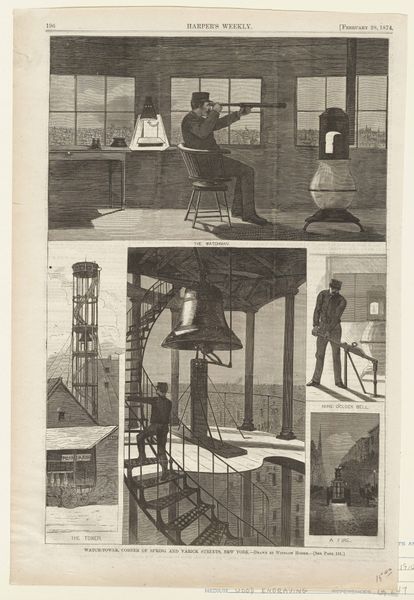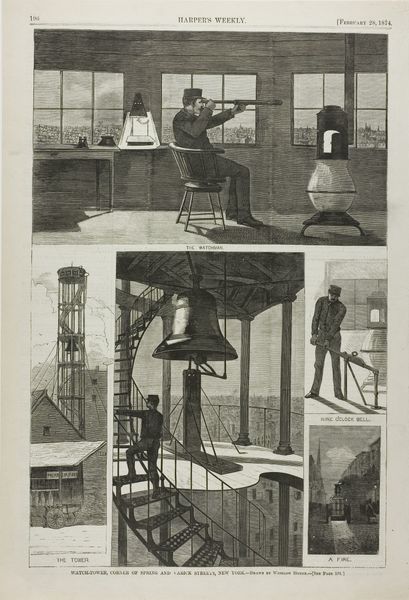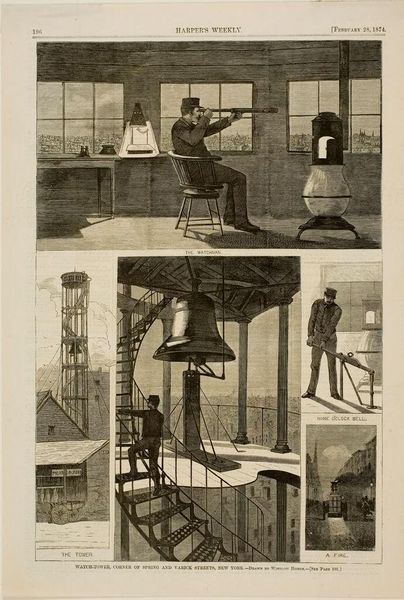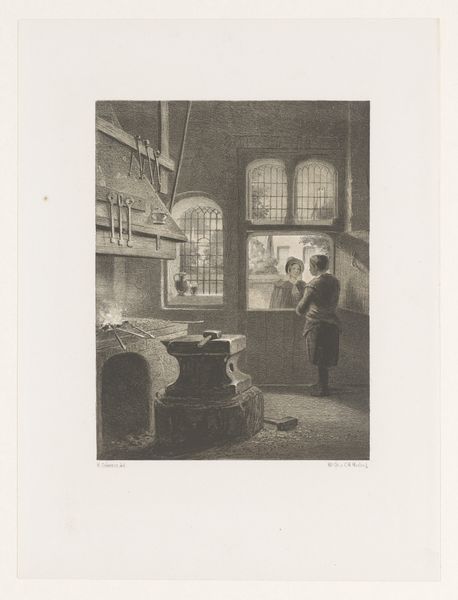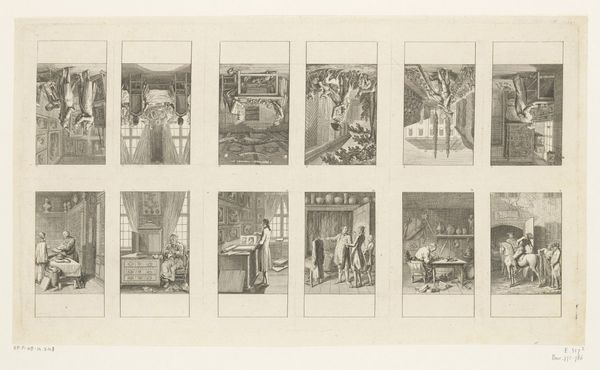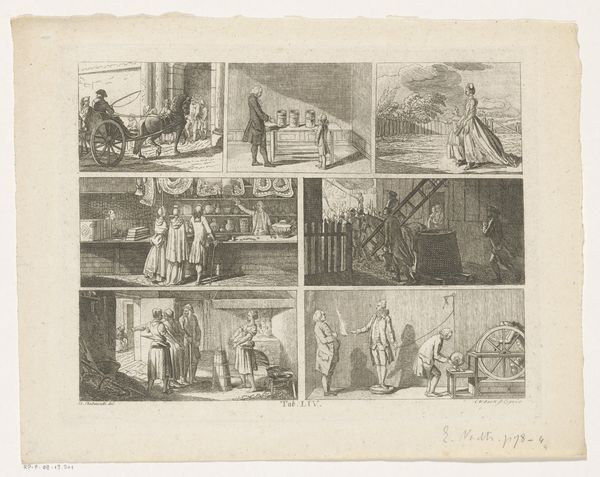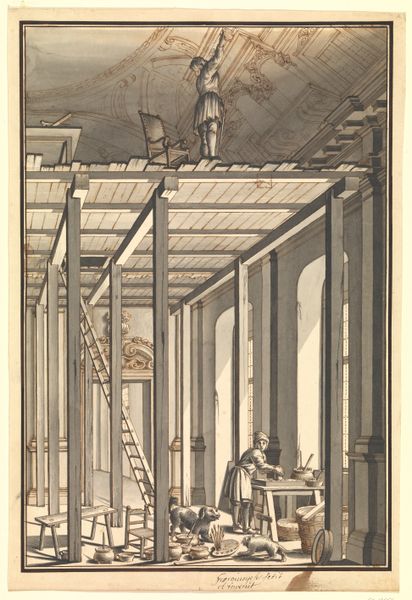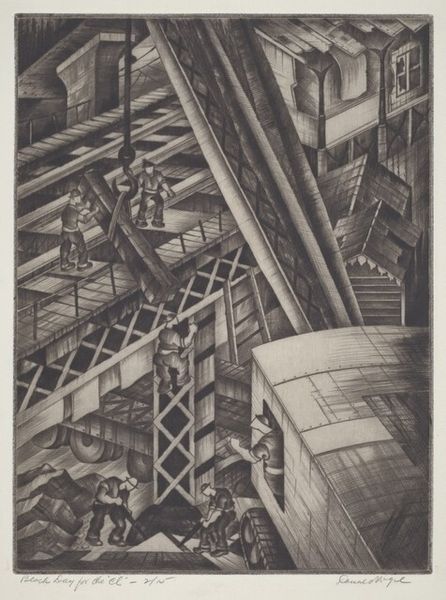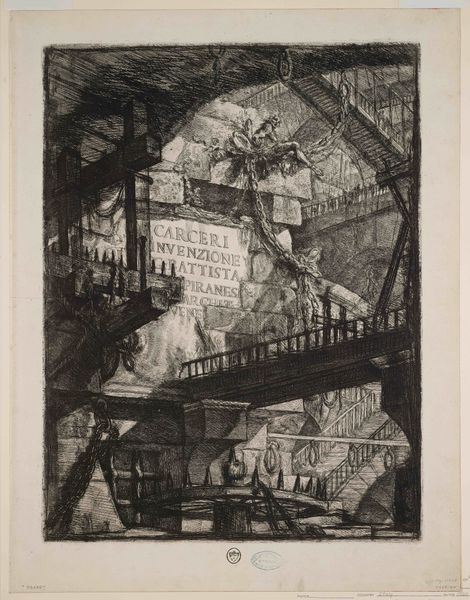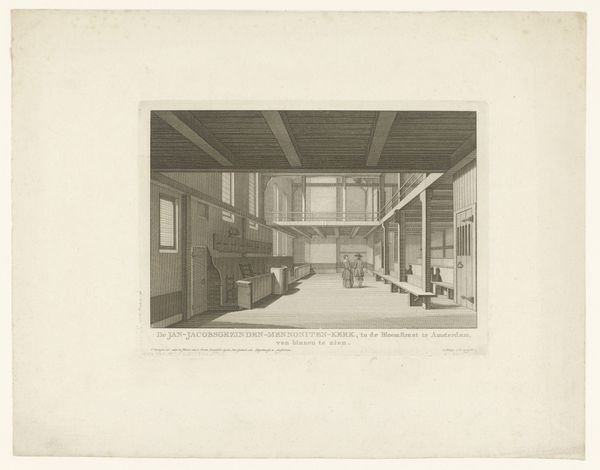
graphic-art, print, woodcut, wood-engraving
#
graphic-art
# print
#
woodcut
#
cityscape
#
genre-painting
#
history-painting
#
wood-engraving
Dimensions: 13 3/4 x 9 1/8 in. (34.9 x 23.2 cm)
Copyright: Public Domain
Curator: Let's explore this fascinating print, “Watch-Tower,” a wood engraving by Winslow Homer from 1874, presently residing here at the Minneapolis Institute of Art. Editor: It has a stark, journalistic feel. The visual vocabulary feels… utilitarian. It seems to represent different vignettes. Is that a watchman in an attic, and then a steeple with a fire-bell? Curator: Exactly. The print depicts the fire watchtower at the corner of Spring and Varick Streets in New York City, in a series of related images. We see the watchman himself, using a telescope to survey the cityscape for signs of fire, then details of the tower and bell. Consider this from a historical context: In the late 19th century, before reliable alarm systems and widespread communication technology, these towers were vital for early fire detection. The engraving also highlights a man sounding a ‘strike-o’clock’ bell. Editor: Yes, and thinking about the bell, it's more than just a functional object here, isn’t it? Throughout history, bells have signaled everything from peace to war, life and death. The fact that its presence is recorded within the frame here—both in its silent form, and being actively rung—emphasizes the multiple layers of communication that the object occupies across culture and time. It connects the temporal and the spiritual realms. Curator: Absolutely, the ringing of a bell could represent the passing of time and simultaneously a call to arms, it signifies the urgent demands of civic infrastructure but what do you make of its position to the cityscape in the distance? It is like an omniscient structure overseeing social progress from above. Consider what role gender might have played in this landscape - watchtowers and their keepers symbolize male vigilance; domestic spheres susceptible and vulnerable; urban centers always burning… It would be easy to deconstruct how masculinist social structures emerge, develop and exert their will across a city that never sleeps! Editor: But by looking beyond the scope, the watch-tower man symbolizes constant watch and immediate response - it provides an optimistic outlook onto progress within this society, and the potential for social change… Curator: It does show the watchman is always available, but what about those who may need constant supervision or correction? Editor: True, though to the casual observer it will certainly inspire. Curator: True enough. Viewing this has reinforced how even seemingly simple artworks, viewed through varied theoretical frameworks, open up multifaceted interpretations of both the world and of each other. Editor: Indeed, my awareness of symbolism makes me newly alert to a different way this structure functions across time. It still communicates the same function in its aesthetic form that it once delivered on street-corners across the city.
Comments
No comments
Be the first to comment and join the conversation on the ultimate creative platform.
